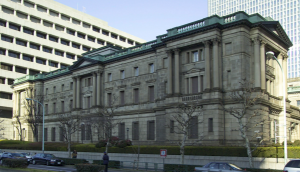Japan's Negative Interest Rates Signal New Direction
 On January 29th, the Bank of Japan (BoJ) chose to introduce a negative interest rate for the first time in its history by a 5-4 majority vote. The BoJ said it would employ a three-tier system to penalize commercial banks for parking excess reserves with the institution starting on February 16. Under the new system, existing balance outside the required reserves will continue to earn a yearly rate of 0.1%. Required balance in the BoJ will receive no interest payments. Any excess reserves will incur a charge of 0.1% per year. The BoJ also warned of further potential interest rate cuts if necessary.
On January 29th, the Bank of Japan (BoJ) chose to introduce a negative interest rate for the first time in its history by a 5-4 majority vote. The BoJ said it would employ a three-tier system to penalize commercial banks for parking excess reserves with the institution starting on February 16. Under the new system, existing balance outside the required reserves will continue to earn a yearly rate of 0.1%. Required balance in the BoJ will receive no interest payments. Any excess reserves will incur a charge of 0.1% per year. The BoJ also warned of further potential interest rate cuts if necessary.
In a press release, the BoJ quoted volatilities in global financial markets, decline of crude oil prices, and uncertain prospects of emerging export-oriented economies, especially China, as reasons for the move. It believes the new negative interest rate would boost confidence, reduce deflationary risks, and help the BoJ reach its inflation target rate of 2% at the earliest possible time.
The decision was a renewed response to Japan’s economic struggles. Since the 1990s, Japan has experienced two decades of little or no real economic growth. Stuck in a mysterious deflationary spiral, Japanese companies produced less; as a consequence, market demand shrank, workers received lower wages, and financial institutions were more hesitant to lend out money. Historically, although without much success, the BoJ always resorted to low interest rates to address the problem of deflation, as low interest rates disincentivize saving, encourage borrowing, and effectively devalue currencies. Increased consumption, flowing capital and devalued currencies are thought to help economies fight deflationary mentalities and become more competitive in international trade.
By making the interest rate negative, the BoJ not only officially recognized negative interest rate as a policy tool, but also indicated that it does not fear a further reduction. Kazumasa Iwata, the former Deputy Governor of the BoJ, said on Thursday that the interest rate could go as low as -2%.
The market responded dramatically to the unexpected interest rate cut. The Japanese Yen dropped close to 200 points against the U.S. dollar after the announcement, while the Nikkei 225 soared 3.07%. International markets showed similar responses. Asian shares jumped and currencies fell against the U.S. dollar over concerns that other Asian central banks would follow Japan’s example and start a currency war.
As for the bond market, the performance of Japan’s government bonds provided another incentive for the BoJ to stick to its policy. As people moved their money from the bank into the bond market, Japan’s 2-year government bond yield fell to a record low of -0.191% due to the price increase from the increased demand. Instead of paying interest on the bonds, the Japanese government can now receive interest when it borrows because of the negative interest rate.
Japan’s move will likely encourage central banks of other countries struggling with their economies to adopt similar policies or expand the scale of existing measures. Europe, for example, is believed to have a higher chance of announcing another interest-rate cut in March.
